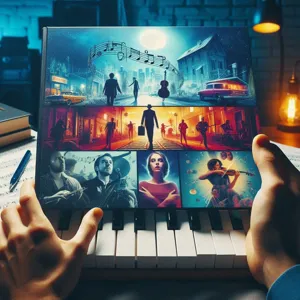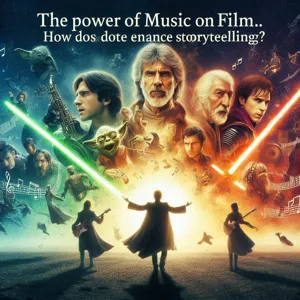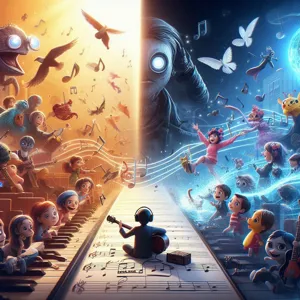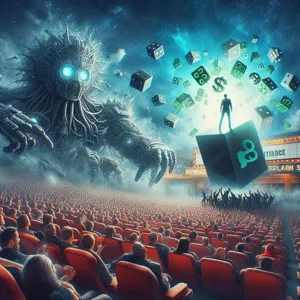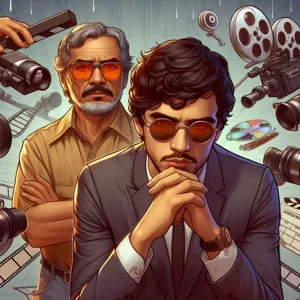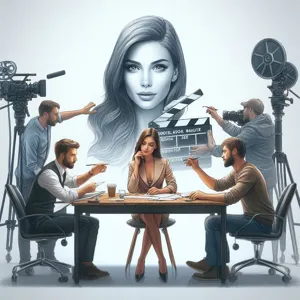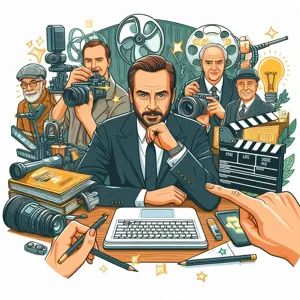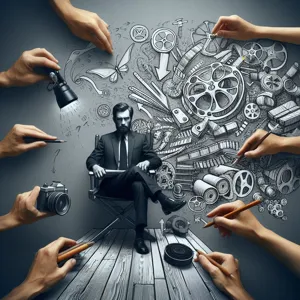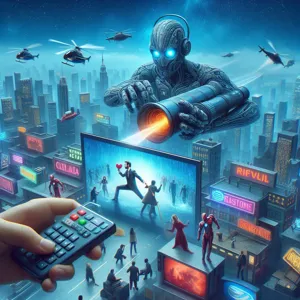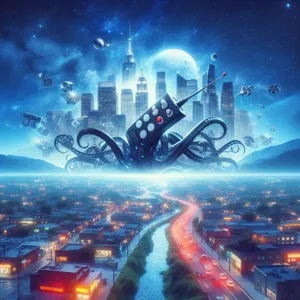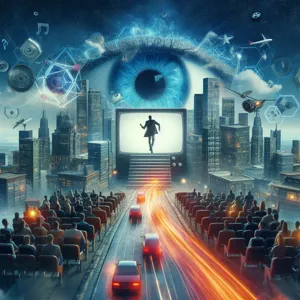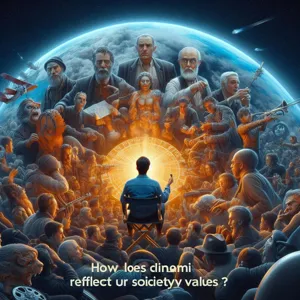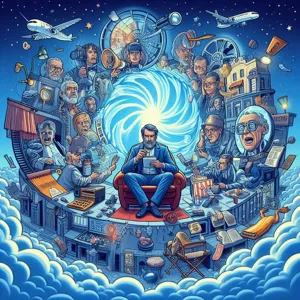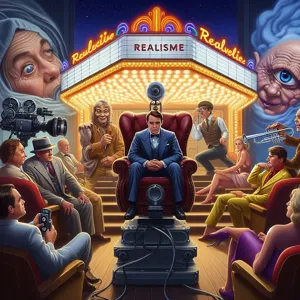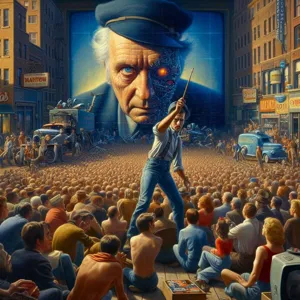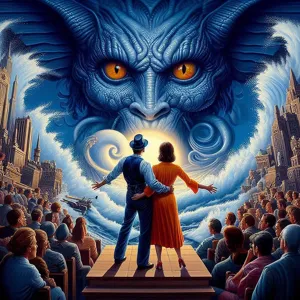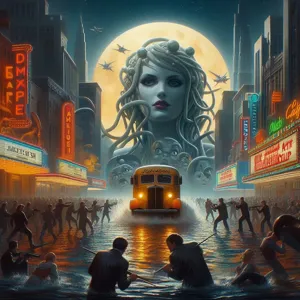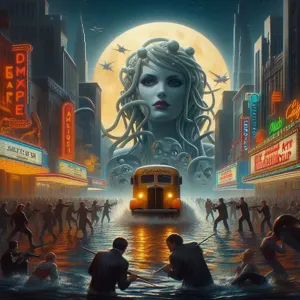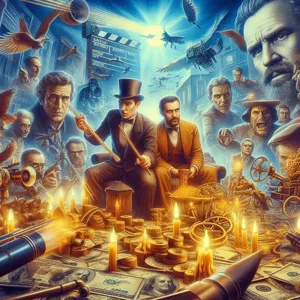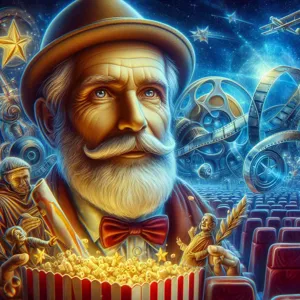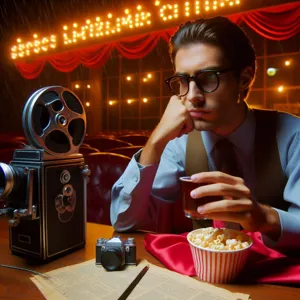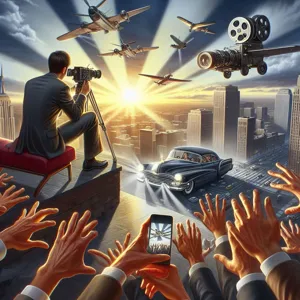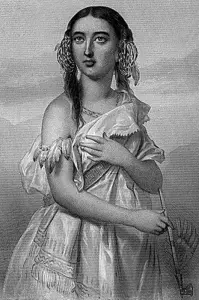In the ever-evolving landscape of filmmaking, a captivating debate has emerged: CGI vs.
practical effects. As technology advances, the allure of computer-generated imagery has transformed the way stories are told on screen, offering filmmakers unprecedented creative freedom and visual possibilities. However, this shift has sparked concerns among purists and enthusiasts alike—are we losing the tactile magic and authenticity that practical effects once brought to the cinematic experience? From the breathtaking miniatures of classic sci-fi to the mesmerizing animatronics of beloved fantasy films, practical effects have historically grounded audiences in a tangible reality. In this blog post, we’ll delve into the intricacies of both CGI and practical effects, exploring their unique strengths and weaknesses, and examine whether the soul of filmmaking is being compromised in the name of progress. Join us as we navigate this captivating crossroads of artistry and technology, shedding light on the future of filmmaking and what it means for the magic that captivates us all.
1. Introduction: The Evolution of Special Effects in Film
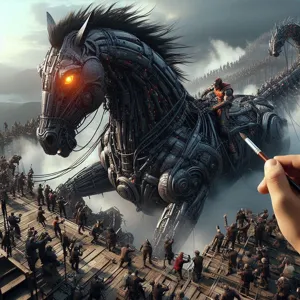
The world of filmmaking has always been a playground for innovation, where creativity knows no bounds and technology continually reshapes the landscape of storytelling. As audiences have evolved, so too have the tools available to filmmakers, leading to an ongoing dialogue about the merits of CGI (computer-generated imagery) versus practical effects. From the early days of cinema, where filmmakers relied on simple tricks like stop-motion and miniatures, to the groundbreaking advancements of the digital age, special effects have been integral to creating immersive worlds that captivate viewers.
In the beginning, filmmakers utilized practical effects—tangible, real-world techniques that brought scenes to life on set. Iconic films like “Star Wars” and “Jaws” relied heavily on the art of puppetry, animatronics, and physical sets, where every explosion, creature, and environment was painstakingly crafted by skilled artisans. These practical effects brought a tactile authenticity to the screen, allowing audiences to connect with the material world of the film in a visceral way.
However, as technology advanced, the rise of CGI introduced filmmakers to a new realm of possibilities. With the ability to create hyper-realistic environments, intricate character designs, and breathtaking action sequences, CGI has revolutionized the filmmaking process. Movies like “Avatar” and “The Lord of the Rings” series showcased the extraordinary potential of digital effects, leaving audiences in awe of the visual spectacles that could be achieved. Yet, this shift has sparked a debate among cinephiles and industry veterans alike: as CGI becomes increasingly prevalent, are we losing the magic and authenticity that practical effects once provided?
In this exploration of CGI versus practical effects, we will delve into the rich history of special effects, analyze the strengths and weaknesses of each approach, and ponder the future of filmmaking as technology continues to evolve. Are we witnessing the end of an era, or can these two distinct methods coexist, each contributing its own unique charm to the art of storytelling? Join us as we embark on a journey through the fascinating evolution of special effects in film, uncovering the delicate balance between innovation and tradition.
2. Defining CGI and Practical Effects
In the realm of filmmaking, the terms CGI (Computer-Generated Imagery) and practical effects are often tossed around, but they represent two distinct approaches to creating visual magic on screen.
**CGI**, as the name suggests, refers to the use of computer technology to create images and animations that are then integrated into live-action footage. This technique has revolutionized the industry, allowing filmmakers to conjure up fantastical worlds, intricate characters, and breathtaking visuals that would be nearly impossible to achieve through traditional means. From the breathtaking landscapes of “Avatar” to the lifelike dinosaurs of “Jurassic Park,” CGI offers limitless possibilities. However, this technology often walks a fine line; when used excessively or poorly, it can result in visuals that feel artificial, leaving audiences yearning for tangible authenticity.
On the other hand, **practical effects** involve the physical creation of effects that are captured on camera during filming. This can include anything from elaborate sets, animatronics, and make-up effects to pyrotechnics and stunt work. Classics like “Star Wars” and “The Thing” showcased the artistry behind practical effects, where skilled artisans painstakingly crafted everything from alien creatures to terrifying monsters. The tactile quality of practical effects often lends a sense of realism and immersion that can be hard to replicate digitally. Many filmmakers argue that these tangible elements create a stronger emotional connection with the audience, as viewers can see the real-world craftsmanship on display.
As technology continues to advance, the conversation around CGI and practical effects becomes increasingly relevant. Each method offers unique advantages and challenges, and the ongoing debate reveals the evolving nature of filmmaking. Are we, as audiences, losing the magic of the tangible in favor of the stunningly virtual? Or can these two approaches coexist, complementing one another to enrich the storytelling experience? The answer lies in the vision of the filmmakers and how they choose to blend these two worlds into a cohesive cinematic journey.
3. A Brief History of Practical Effects in Filmmaking
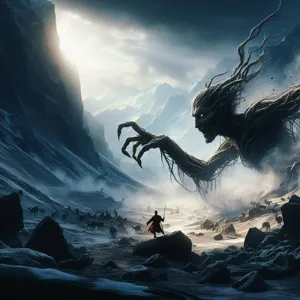
The world of filmmaking has always been a canvas for creativity, where the boundaries of reality are stretched to create immersive experiences. Practical effects, the physical techniques used to create illusions on screen, have played a pivotal role in this artistic endeavor since the inception of cinema. Their roots can be traced back to the early 20th century, when filmmakers began to experiment with innovative techniques to captivate audiences.
One of the earliest pioneers was Georges Méliès, who mesmerized viewers with his imaginative short films, like “A Trip to the Moon” (1902). Méliès utilized a variety of practical effects, including stop-motion animation and clever camera tricks, to fabricate fantastical worlds that were previously unimaginable. His work laid the groundwork for the burgeoning field of special effects and inspired countless filmmakers who followed.
As the years progressed, practical effects evolved dramatically, particularly during the golden age of Hollywood. Iconic films like “King Kong” (1933) showcased groundbreaking techniques such as animatronics and puppetry, enabling filmmakers to bring larger-than-life creatures to the screen. The use of models and miniatures became a staple in blockbuster productions, allowing directors to build entire cities or intricate spacecraft that would otherwise be impossible to film.
The late 20th century saw practical effects reach new heights with the advent of innovative technologies. Films like “Star Wars” (1977) revolutionized the industry by blending practical effects with cutting-edge techniques, such as motion control photography, to create breathtaking space battles and alien landscapes. Meanwhile, studios like Industrial Light & Magic (ILM) became synonymous with practical ingenuity, pushing the envelope of what could be achieved through hands-on craftsmanship.
Despite the rise of computer-generated imagery (CGI) in the 1990s, practical effects never truly faded away. Filmmakers like Guillermo del Toro and Christopher Nolan have consistently championed their use, believing that tangible effects add a layer of authenticity and emotional resonance that CGI often struggles to replicate. The tactile nature of practical effects enriches the viewer’s experience, grounding even the most fantastical stories in a sense of reality.
As we delve deeper into the discussion of CGI versus practical effects, it is crucial to appreciate the rich history of practical effects in filmmaking, understanding how they have shaped the industry and continue to coexist alongside their digital counterparts. In a world increasingly dominated by technology, the art of practical effects reminds us of the magic that can be achieved through creativity, craftsmanship, and a touch of imagination.
4. The Rise of CGI: Key Milestones
The evolution of CGI (Computer-Generated Imagery) has been nothing short of revolutionary, marking significant milestones that have transformed the landscape of filmmaking. The journey began in the early 1970s, when pioneering films like *Westworld* introduced audiences to the concept of computer-generated visuals. While these early attempts were primitive by today’s standards, they laid the groundwork for what was to come.
Fast forward to 1993, when *Jurassic Park* hit theaters, forever changing the game with its groundbreaking use of CGI. The film’s lifelike dinosaurs, brought to life by a combination of digital effects and animatronics, showcased the potential of CGI to create stunning, immersive worlds that captivated audiences. This was a pivotal moment that demonstrated CGI’s ability to produce visuals that could rival practical effects, pushing the boundaries of what filmmakers could achieve.
As technology advanced, so did the complexity of CGI. The release of *The Matrix* in 1999 introduced audiences to the breathtaking “bullet time” effect, a technique that combined live-action with digital manipulation to create mind-bending visuals. This film not only showcased the power of CGI but also inspired a generation of filmmakers to experiment with new storytelling methods.
The 2000s saw CGI reach new heights with films like *Avatar* (2009), which utilized cutting-edge motion capture technology and 3D effects to create a fully realized alien world. *Avatar* became the highest-grossing film of all time, demonstrating the commercial viability of CGI-laden blockbusters and solidifying its place in the industry.
Today, CGI is an integral part of the filmmaking process, used in everything from action-packed superhero flicks to heartwarming animated features. While practical effects still hold a cherished place in the hearts of filmmakers and audiences alike, the rise of CGI has undeniably reshaped the way stories are told on screen, allowing for a level of creativity and imagination that was once thought impossible. As we continue to witness advancements in technology, one can’t help but wonder: is the magic of filmmaking losing its touch, or is it simply evolving into something new?
5. Comparing the Aesthetics: CGI vs. Practical Effects
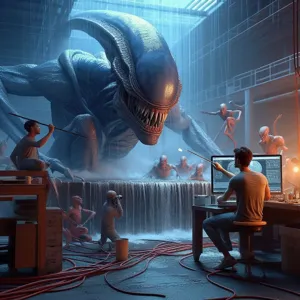
When it comes to the aesthetics of filmmaking, the debate between CGI (computer-generated imagery) and practical effects is more than just a discussion of technology; it’s a clash of artistic philosophies. CGI offers an expansive canvas, allowing filmmakers to create breathtaking visuals that might be impossible to achieve with physical effects alone. From towering mythical creatures to sprawling fantasy landscapes, CGI can transport audiences to realms beyond the constraints of reality. However, while CGI can dazzle with its intricate details and limitless possibilities, it sometimes lacks the tangible authenticity that practical effects provide.
Practical effects, on the other hand, embody a raw, tactile quality that resonates with viewers on an emotional level. The realism of a meticulously crafted animatronic or an expertly executed stunt can evoke a genuine sense of wonder. Films like “Jurassic Park” and “The Thing” are perfect examples where practical effects not only enhanced the storytelling but also created memorable moments that have stood the test of time. The physical presence of actors interacting with real elements often results in a depth and nuance that CGI may struggle to replicate.
Moreover, the aesthetic differences extend beyond the visuals; they influence the entire atmosphere of a film. Practical effects often help to ground a story in reality, allowing audiences to suspend disbelief more easily. In contrast, overly reliant CGI can sometimes lead to a disconnect, where viewers are aware they are witnessing a digital creation rather than an immersive experience.
Ultimately, the choice between CGI and practical effects can shape the emotional resonance of a film. While CGI continues to evolve and impress, the artistry of practical effects reminds us of the magic of craftsmanship in filmmaking. As directors, producers, and audiences navigate this intricate landscape, the question remains: can CGI ever truly capture the heart and soul that the hands-on artistry of practical effects brings to the silver screen?
6. The Emotional Impact of Practical Effects
The Emotional Impact of Practical Effects
In a world increasingly dominated by CGI, the emotional resonance of practical effects remains a powerful force in filmmaking. There’s an undeniable authenticity that comes from physically crafted elements on set—be it a meticulously designed creature, a breathtaking stunt, or a stunning backdrop. When audiences witness these real, tangible creations, they often feel a deeper connection to the story being told. The tactile nature of practical effects allows actors to interact with their environment in a way that feels genuine; their performances are often more nuanced and grounded as they respond to the physicality around them.
Take, for instance, the iconic scene in “Jurassic Park” where the first T-Rex emerges from the shadows. The sense of awe and terror experienced by both the characters and the audience is amplified by the practical animatronics and set design. The sheer weight of the creature’s presence—its texture, movement, and the physical reactions of the actors—creates a visceral experience that CGI, for all its advancement, sometimes struggles to replicate.
Moreover, practical effects often evoke nostalgia, reminding audiences of the craftsmanship and ingenuity of filmmakers who relied on their creativity and resourcefulness to bring their visions to life. Films like “The Thing” and “Alien” have left lasting impressions not just for their storytelling but for the artistry involved in their special effects. Each painstakingly crafted prop, makeup application, or set piece tells a story of its own, enhancing the overall narrative and enriching the viewer’s emotional journey.
In contrast, CGI, while capable of producing stunning visuals, can sometimes result in a disconnect. The overuse of digital effects can create a sense of unreality, pulling viewers out of the moment. There’s a unique thrill that comes from knowing a stunt was performed live, or that a creature was once a physical entity on set, breathing life into the scene. This connection fosters a stronger emotional investment in the characters and their struggles, anchoring the film in a reality that feels both tangible and relatable.
Practical effects have a way of imbuing a film with a sense of history and authenticity. They evoke genuine emotions that transcend the screen, inviting viewers into a world that feels lived-in and real. As filmmakers continue to explore the balance between CGI and practical techniques, it’s crucial to remember the emotional weight that comes from the artistry of real-world effects—a magic that, though it may evolve, should never lose its touch.
7. The Technical Advantages of CGI
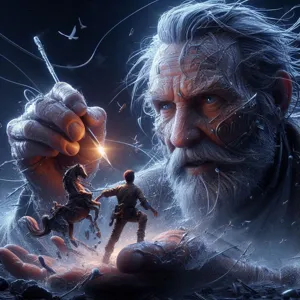
In the realm of filmmaking, Computer-Generated Imagery (CGI) offers a plethora of technical advantages that have revolutionized the way stories are told on screen. Unlike practical effects, which rely on physical models, makeup, and in-camera tricks, CGI allows filmmakers to create visual elements that would be impossible or prohibitively expensive to achieve through traditional methods.
One of the most significant benefits of CGI is its versatility. Filmmakers can conjure entire worlds, from sprawling alien landscapes to detailed fantasy realms, all crafted within the confines of a computer. This opens the door to limitless creativity, enabling directors to visualize their most ambitious ideas without the constraints of physical limitations or safety concerns associated with practical effects. For instance, the creation of epic battles in films like “The Lord of the Rings” and “Avengers: Endgame” showcases how CGI can enhance the scale and intensity of action sequences, creating breathtaking spectacles that captivate audiences.
Moreover, CGI offers precise control over every aspect of a shot. Visual effects artists can manipulate lighting, textures, and movements with astonishing accuracy, ensuring that the final product aligns perfectly with the director’s vision. This level of detail is particularly evident in character animation, where CGI allows for lifelike expressions and movements—think of the stunning realism in films like “Avatar” or the emotive depth of animated characters in “Toy Story.”
Additionally, CGI significantly reduces the logistical challenges associated with practical effects. Shooting on location can present numerous hurdles, from weather conditions to the availability of physical props. With CGI, these obstacles can be sidestepped, allowing for a more efficient and flexible production process. Filmmakers can shoot scenes in a controlled environment and seamlessly integrate digitally created elements in post-production, ultimately saving time and resources.
However, while the technical advantages of CGI are undeniable, they also raise questions about the authenticity and tactile nature of filmmaking. This juxtaposition between CGI and practical effects sparks ongoing debates within the industry and among audiences, as many wonder whether the magic of filmmaking is losing its touch amid the rise of digital technology. As we delve deeper into this discussion, it’s crucial to consider both the innovations that CGI brings and the irreplaceable charm of practical effects in crafting cinematic experiences.
8. Notable Films that Mastered Practical Effects
When it comes to practical effects, certain films stand out as paragons of creativity and craftsmanship, showcasing the magic that can be achieved without relying heavily on digital manipulation. These films not only pushed the boundaries of what was possible in their time but also left an indelible mark on the industry and audiences alike.
One of the most iconic examples is **”Star Wars” (1977)**, where the visionary work of special effects wizard George Lucas and his team at Industrial Light & Magic set a new standard for visual storytelling. From the intricate model work of spacecraft to the detailed puppetry of Yoda, the film created a universe that felt tangible and real, captivating audiences and inspiring generations of filmmakers.
Another remarkable film is **”Jurassic Park” (1993)**, which balanced cutting-edge CGI with stunning practical effects. The life-sized animatronic dinosaurs created by Stan Winston’s team brought a visceral authenticity that made the T-Rex chase scenes unforgettable. The film’s innovative blend of effects not only showcased the power of practical work but also laid the groundwork for how CGI could be used as a complementary tool rather than a replacement.
In the realm of horror, **”The Thing” (1982)** remains a masterclass in practical effects. Directed by John Carpenter, the film is renowned for its grotesque and surreal creature designs, achieved through practical makeup and animatronics. The sheer creativity and craftsmanship behind the transformations and body horror continue to influence filmmakers and haunt the minds of viewers long after the credits roll.
Lastly, **”Mad Max: Fury Road” (2015)** is a modern testament to the effectiveness of practical effects, where director George Miller combined breathtaking stunts with real vehicles and sets to create an adrenaline-fueled cinematic experience. The film’s commitment to practical effects over CGI, especially in its high-octane chase sequences, delivers a visceral impact that resonates with audiences, earning it critical acclaim and numerous awards.
These films remind us that while digital technology has transformed the landscape of filmmaking, the artistry and ingenuity of practical effects still hold a special place in our hearts. They evoke a sense of wonder and authenticity that can sometimes be lost in the ever-expanding world of CGI. As filmmakers continue to explore new technologies, the legacy of practical effects endures, encouraging us to appreciate the craft that lies at the heart of cinema.
9. CGI Innovations and Breakthroughs
In the ever-evolving landscape of filmmaking, CGI innovations and breakthroughs have transformed the way stories are told on screen. The advancement of technology has allowed filmmakers to create stunning visuals that were once deemed impossible, pushing the boundaries of imagination and artistry. From the hyper-realistic creatures of “Jurassic Park” to the breathtaking landscapes in “Avatar,” CGI has opened doors to new realms of creativity, enabling directors to craft immersive worlds that captivate audiences.
One of the most significant breakthroughs in CGI is the emergence of real-time rendering technologies. This allows filmmakers to visualize their scenes instantly, fostering a more collaborative environment during the production process. Innovations like Unreal Engine have empowered creators to simulate environments and characters in real time, giving them the flexibility to experiment and refine their vision on the fly. This not only enhances efficiency but also inspires creativity, enabling filmmakers to achieve unprecedented levels of detail and realism.
Moreover, advancements in motion capture technology have revolutionized the way actors interact with CGI. Films like “The Lord of the Rings” and “War for the Planet of the Apes” have showcased how motion capture can breathe life into digital characters, allowing for nuanced performances that resonate with audiences. This blending of human emotion with digital artistry has created a new standard for storytelling, where CGI not only serves as a tool but becomes an integral part of character development.
However, while CGI continues to evolve, it raises important questions about the soul of filmmaking. Are these innovations enhancing the art form, or are they overshadowing the craftsmanship of practical effects? As filmmakers embrace new possibilities, it’s essential to strike a balance between digital wizardry and the tangible artistry that has defined cinema for generations. The future of filmmaking lies in the synergy of CGI and practical effects, where both can coexist to create a richer, more immersive experience for audiences.
10. Audience Perception: What Do Viewers Prefer?
In the ever-evolving landscape of filmmaking, audience perception plays a pivotal role in determining the effectiveness of CGI versus practical effects. As technology advances, so too does the palette from which filmmakers can draw, allowing for breathtaking visuals that were once confined to the realm of imagination. However, the question remains: what do viewers truly prefer?
Surveys and focus groups reveal a fascinating dichotomy in audience preferences. Many viewers appreciate the nostalgia and authenticity that practical effects bring. These tangible, real-world elements often evoke a sense of connection, grounding fantastical narratives in a reality that feels more relatable. A well-executed practical effect can elicit gasps of wonder, as audiences marvel at the skill and creativity involved in bringing a creature or scene to life without the aid of digital manipulation. Films like “Mad Max: Fury Road” and “The Thing” are often cited as prime examples of how practical effects can create a visceral experience that resonates long after the credits roll.
On the flip side, CGI offers filmmakers an expansive toolkit, enabling them to craft visually stunning sequences that defy the laws of physics and nature. Audiences are often dazzled by the sheer scale and complexity of CGI landscapes and creatures, immersing them in worlds that feel limitless. The success of blockbusters such as “Avatar” and the Marvel Cinematic Universe showcases how CGI can push the boundaries of storytelling, allowing for thrilling action sequences and elaborate worlds that captivate viewers.
However, the overuse of CGI has sparked debate among cinephiles. Many argue that excessive digital effects can lead to a disconnect, making it difficult for viewers to suspend their disbelief. The uncanny valley effect—when digital creations look almost, but not quite, human—can leave audiences feeling unsettled. Consequently, some viewers crave a balance between the two, appreciating the artistry of practical effects while still reveling in the possibilities that CGI brings.
As filmmakers continue to navigate this complex landscape, understanding audience perception will be crucial. The magic of filmmaking lies in its ability to evoke emotion, whether through the tangible craftsmanship of practical effects or the limitless possibilities of CGI. Ultimately, striking the right balance between these two approaches may well be the key to creating unforgettable cinematic experiences that resonate with audiences for generations to come.
11. The Cost Factor: Budgeting for Effects
When it comes to the age-old debate of CGI versus practical effects, one of the most significant factors influencing filmmakers’ decisions is the cost. Budget constraints can dictate whether a director opts for the digital wizardry of computer-generated imagery or the tangible artistry of practical effects.
CGI has revolutionized the filmmaking industry, allowing creators to craft breathtaking visuals that were once confined to the imagination. However, this flexibility comes with a hefty price tag. High-quality CGI requires skilled artists, advanced software, and powerful hardware, often leading to a significant portion of the budget being allocated to digital effects. For blockbuster films, this can mean millions of dollars spent on rendering lifelike creatures, expansive landscapes, or explosive action sequences.
On the other hand, practical effects, although sometimes seen as a more cost-effective solution, can also incur substantial expenses. The materials used for physical props, animatronics, and set designs require skilled artisans and craftsmen, as well as time for construction and rehearsal. For instance, creating a lifelike monster suit or a detailed miniature set can be labor-intensive and time-consuming, potentially pushing budgets higher than initially anticipated.
Moreover, the cost factor extends beyond just the monetary aspect; it includes the potential impact on filming schedules. CGI can offer the convenience of flexibility in post-production, allowing filmmakers to make adjustments and enhancements long after the cameras have stopped rolling. Practical effects, however, often require detailed planning and precision during the shoot, making it imperative for the crew to stay on schedule and work efficiently.
Ultimately, the decision between CGI and practical effects often boils down to the specific needs of a project and the vision of its creators. While the allure of stunning digital vistas can be tempting, the palpable authenticity of practical effects can evoke a sense of nostalgia and connection that resonates deeply with audiences. As filmmakers navigate the cost factor in their budgeting, it becomes clear that both CGI and practical effects have their place in the cinematic landscape, each contributing to the magic of filmmaking in its own unique way.
12. The Future of Filmmaking: Trends and Predictions
As we stand on the brink of a new era in filmmaking, the debate between CGI and practical effects continues to evolve, shaping the way stories are told on screen. The future of filmmaking is poised for an exciting transformation, driven by advancements in technology, changing audience expectations, and a desire for innovative storytelling techniques.
One of the most significant trends we’re witnessing is the growing integration of augmented reality (AR) and virtual reality (VR) into the filmmaking process. Filmmakers are beginning to explore immersive experiences that allow viewers to step inside the story, blurring the lines between viewer and participant. Imagine watching a film where you can navigate the environment, interact with characters, and influence the storyline. This shift not only enhances audience engagement but also opens up new avenues for creative expression.
Additionally, artificial intelligence (AI) is making waves in the industry, streamlining everything from scriptwriting to post-production. AI algorithms can analyze audience preferences and predict what types of stories resonate, helping creators craft narratives that are more aligned with viewer interests. While this may raise questions about artistic integrity, it could also lead to a renaissance of tailored storytelling, where the audience feels a deeper connection to the content.
Moreover, the resurgence of practical effects, as seen in recent blockbuster films that blend traditional techniques with modern technology, suggests a renewed appreciation for the tangible artistry of filmmaking. Many directors are advocating for a balanced approach, using CGI to enhance rather than replace physical effects. This hybrid method not only brings a sense of authenticity to the visuals but also pays homage to the craftsmanship that has defined cinema for decades.
As we look to the horizon of filmmaking, it’s clear that the industry is at a crossroads. While CGI continues to push the boundaries of what’s possible, the heart of storytelling remains rooted in the emotional connections we forge with characters and narratives. The future of filmmaking will likely be characterized by a harmonious blend of the old and the new, ensuring that the magic of cinema—whether through CGI wizardry or the tactile charm of practical effects—continues to captivate audiences for generations to come.
13. Hybrid Approaches: Combining CGI and Practical Effects
In the ever-evolving landscape of filmmaking, the debate between CGI and practical effects has sparked passionate discussions among filmmakers and audiences alike. However, a hybrid approach—where both techniques are harmoniously combined—is emerging as a powerful solution that brings out the best of both worlds. This method not only enhances the visual experience but also preserves the tangible magic that practical effects provide.
Imagine a breathtaking scene where a colossal dragon soars over a sprawling cityscape. By employing practical effects for the dragon’s intricate model and animatronics, filmmakers can create a visceral sense of realism that CGI alone might struggle to replicate. Then, with the addition of CGI, they can seamlessly integrate dynamic movements and breathtaking aerial shots that elevate the spectacle to new heights. This fusion captures the awe-inspiring essence of the creature while ensuring it interacts believably with its environment.
Hybrid techniques also allow for greater flexibility during production. Filmmakers can use practical effects to ground a scene, creating a solid foundation that actors can react to, while leveraging CGI to enhance the action or fill in the background. This can lead to more natural performances, as actors have something tangible to connect with, rather than merely acting against a green screen.
Moreover, the hybrid approach can significantly reduce reliance on either method alone, offering a budget-friendly alternative that meets the demands of modern filmmaking. By striking a balance between CGI and practical effects, filmmakers can craft stunning visuals that resonate with audiences, all while maintaining the sense of awe and wonder that has defined cinema for generations. As we celebrate this innovative approach, it becomes clear that the magic of filmmaking is not losing its touch; it’s simply evolving, blending the old and the new to create something truly extraordinary.
14. Iconic Moments in Film: Practical vs. CGI Showdown
When it comes to iconic moments in film, the debate between practical effects and CGI often sparks passionate discussions among cinephiles. Both techniques have produced unforgettable scenes that have left an indelible mark on cinema history, yet they achieve their magic in profoundly different ways.
Take, for instance, the terrifying revelation of the T-Rex in *Jurassic Park*. The groundbreaking use of animatronics and practical effects created a palpable sense of awe and dread, drawing audiences into a visceral experience that CGI alone may not have achieved. The sheer scale and presence of the animatronic dinosaur brought a tangible realism that made viewers believe they were witnessing a living, breathing creature. In contrast, the more recent *Jurassic World* films, while visually stunning, lean heavily on CGI. While they deliver incredible visuals, some argue they lack the same emotional gravitas that practical effects can evoke.
Another compelling showdown can be seen in the hauntingly beautiful world of *The Lord of the Rings*. Peter Jackson’s use of practical effects, such as the physical sets of Hobbiton and the intricate makeup for characters like the Orcs, established a rich, immersive environment that felt deeply rooted in reality. CGI was expertly woven into the narrative, enhancing the epic battles and fantastical landscapes, but it’s the practical elements that often resonate with audiences, grounding the fantasy in something tangible.
Consider also the iconic scene from *Star Wars: Episode IV – A New Hope* where the Millennium Falcon makes the jump to hyperspace. The combination of miniature models and practical effects created a thrilling sense of speed and adventure that still captivates viewers today. Compare this to the CGI-heavy sequences in *Star Wars: Episode I – The Phantom Menace*, where the podracing scene dazzles with visual flair but sometimes feels disconnected from the physicality that made the original trilogy so iconic.
As filmmakers continue to push the boundaries of technology, it becomes clear that both practical effects and CGI have their rightful place in the cinematic toolkit. Ultimately, the magic of filmmaking lies in the art of balance—knowing when to employ each technique to enhance storytelling and evoke genuine emotional responses from audiences. In this ongoing showdown, it’s the moments that resonate, whether through the tactile allure of practical effects or the boundless possibilities of CGI, that will determine the legacy of modern cinema.
15. Conclusion: Preserving the Magic of Filmmaking
As we conclude our exploration of CGI versus practical effects, it becomes clear that the heart of filmmaking lies not just in the technologies employed but in the stories we tell and the emotions we evoke. While CGI offers filmmakers unprecedented possibilities, enabling them to create fantastical worlds and breathtaking visuals that were once relegated to the realm of imagination, practical effects bring a tangible authenticity that resonates deeply with audiences. The smell of smoke, the weight of a prop, and the visceral reactions of actors interacting with real objects can create a sense of immersion that digital effects sometimes struggle to replicate.
The debate between CGI and practical effects is not merely a matter of preference; it symbolizes a broader conversation about the craft of filmmaking itself. As technology continues to evolve, filmmakers face the challenge of balancing innovation with tradition. To preserve the magic of filmmaking, it is essential to recognize the value of both approaches. By blending CGI with practical effects, filmmakers can harness the strengths of each medium, creating a rich tapestry that captivates viewers and transports them into the narrative.
Ultimately, the magic of filmmaking is not solely about the visuals; it’s about the connection forged between the audience and the story. As we move forward, let us celebrate the artistry behind both CGI and practical effects, ensuring that the magic of cinema remains alive and vibrant for generations to come. Whether through the tangible allure of physical effects or the limitless potential of digital artistry, the essence of storytelling must always reign supreme. In this ever-evolving landscape, it is our responsibility as fans, creators, and critics to advocate for the preservation of this magic, ensuring that the art of filmmaking continues to inspire and enchant.
In exploring the evolving landscape of filmmaking, we hope this discussion on CGI versus practical effects has sparked your curiosity and deepened your appreciation for the artistry behind the camera. While CGI offers unparalleled possibilities and has revolutionized how stories are told, practical effects embody a tangible magic that resonates with audiences in a uniquely visceral way. The two techniques, rather than being in opposition, can complement each other, creating a rich tapestry of visual storytelling. As filmmakers continue to push the boundaries of creativity, the blend of both methods might just be the key to capturing the hearts of viewers. Ultimately, the magic of filmmaking is not lost; it evolves, inviting us to experience new worlds in ways we’ve yet to imagine. So, whether you’re a die-hard fan of practical effects or a lover of cutting-edge CGI, remember that the true essence of cinema lies in its ability to transport us, regardless of the tools used to create that journey.

